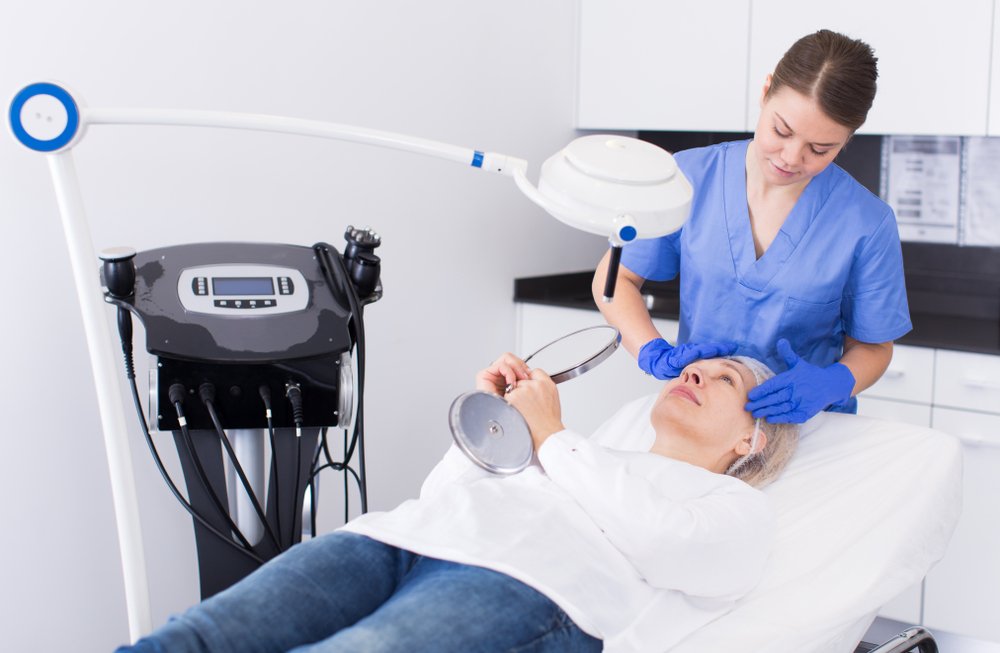
Description
Dermatologists are doctors of the skin, which is the largest organ of the human body. They treat common skin ailments such as sunburns, acne, and rashes. They also treat serious skin conditions, such as skin cancer. All in all, dermatologists treat more than 3,000 diseases. About two dozen skin ailments make up about 80 percent of the cases seen nationwide. There are different subspecialties within the field of dermatology. These specialties include cosmetic dermatology, dermatopathology, immunohematology, pediatric dermatology, and tele dermatology. Dermatologists usually work in a private practice office. They may be employed by the office or own the office if they have years of experience. They typically work 9 to 5 and don’t work weekends or holidays, although they may work evenings when they have a heavy patient load.
According to the National Bureau of Labor Statistics, the demand for physicians and surgeons, which includes dermatologists, is set to rise 15 percent through 2026.
Common Duties/Routines
Evaluate Patients
The primary responsibility of dermatologists is to evaluate the skin conditions of their patients. This requires a methodical attention to detail and an extensive knowledge of both common and rare skin diseases. Dermatologists usually dictate their analysis to a digital recorder to analyze at a later time.
Analyze Patient Medical History
Dermatologists analyze a patient’s medical history while they review their initial evaluation of the patient. They use the combination of this information to determine if more extensive diagnostic tests are needed or which medications can be prescribed to treat the patient’s conditions.
Refer Patients to Other Specialists as Needed
Even though dermatologists are specialists, they still have to refer patients to other specialists from time to time. This could include referring patients for specialized diagnostic testing or to another dermatologist who specializes in certain skin conditions.
Participate in Professional Development Opportunities
Like any other medical doctor, dermatologists have to keep their knowledge fresh. This involves attending seminars and conferences, as well as conducting clinical research.
Prescribe Medications and Provide Skin Therapy Treatments
If dermatologists can diagnose patient conditions without further testing, they provide treatment. For some conditions, this means the application of skin therapy treatments. For most common ailments, this means prescribing medications.

Required/Trained Skills
The role of a dermatologist is a highly technical position that requires a plethora of specialized knowledge. Dermatologists have to be experts in basic immunology, clinical pharmacology, cutaneous microanatomy and biology, the skin, and subcutaneous tissue anatomy. They must be passionate to stay current on the latest information regarding these areas of knowledge. Problem solvers, good dermatologists also need humility to know when they can’t solve a problem and need to refer a patient to a specialist. In addition, the following skills important:
- Diagnosing skin conditions based on expertise in dermatology.
- Analyzing patient medical history as a part of the diagnostic process.
- Communicating with patients to help them understand their condition and possible treatments.
- Using knowledge of clinical pharmacology to prescribe medication to patients
Dermatological screenings involve checking the body for visible symptoms, suspicious lesions and probably problematic areas. Dermatologists could re-evaluate the skin with the help of a series of lights to test for cancerous or pre-cancerous moles, melanomas or tumors, also as skin problem patches and different abnormalities. They will conjointly feel a patient's lymph nodes to test for any suspicious lumps or swelling. Routine medicine screenings are counseled for everybody, thus dermatologists will expect to frequently perform such inspections
Dermatologist Education and Training
Like any type of medical doctor, the education process for becoming a dermatologist is extensive. It takes 12 years to become a licensed dermatologist. One must have a bachelor‘s degree and 4 years of medical school with a degree. After serving a 1-year internship and passing all three parts of the USMLE, aspiring dermatologists perform a 3-year dermatology residency. Once they are licensed in their state, they are free to practice. Most go on to get board-certified, which involves specialization in a specific sub-niche of dermatology.
Skillset 3
Skillset
HARD SKILLS
- Human anatomy knowledge
- Medicine skills
- Skin care skills


